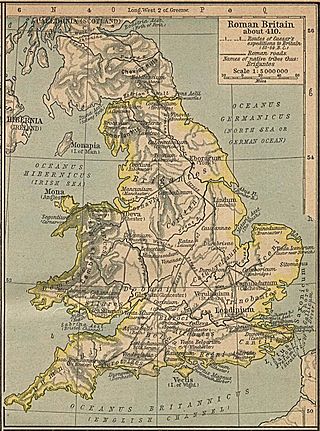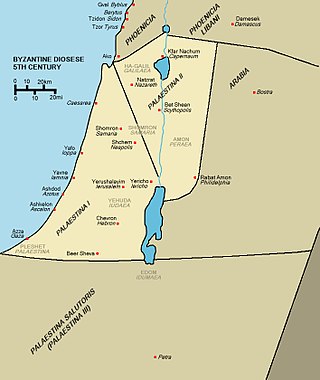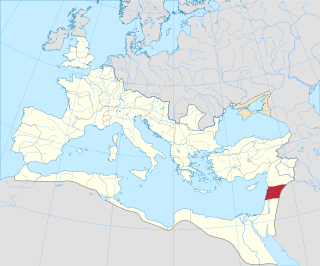Related Research Articles

Gallia Lugdunensis was a province of the Roman Empire in what is now the modern country of France, part of the Celtic territory of Gaul formerly known as Celtica. It is named after its capital Lugdunum, possibly Roman Europe's major city west of Italy, and a major imperial mint. Outside Lugdunum was the Sanctuary of the Three Gauls, where representatives met to celebrate the cult of Rome and Augustus.

Moesia was an ancient region and later Roman province situated in the Balkans south of the Danube River. Moesian Province was first administered by governor of Noricum as 'Civitates of Moesia and Triballia'. It included most of the territory of modern eastern Serbia, Kosovo, north-eastern Albania, northern parts of North Macedonia, Northern Bulgaria, Romanian Dobruja and small parts of Southern Ukraine.

The Roman provinces were the administrative regions of Ancient Rome outside Roman Italy that were controlled by the Romans under the Roman Republic and later the Roman Empire. Each province was ruled by a Roman appointed as governor.

Praeses is a Latin word meaning "placed before" or "at the head". In antiquity, notably under the Roman Dominate, it was used to refer to Roman governors; it continues to see some use for various modern positions.

Maxima Caesariensis, also known as Britannia Maxima, was one of the provinces of the Diocese of "the Britains" created during the Diocletian Reforms at the end of the 3rd century. It was probably created after the defeat of the usurper Allectus by Constantius Chlorus in AD 296 and was mentioned in the c. 312 Verona List of the Roman provinces. Its position and capital remain uncertain, although it was probably adjacent to Flavia Caesariensis. On the basis of its governor's eventual consular rank, it is now usually considered to have consisted of Augusta or Londinium (London) and southeastern England.

Vicarius is a Latin word, meaning substitute or deputy. It is the root of the English word "vicar".

Legio V Macedonica was a Roman legion. It was probably originally levied in 43 BC by consul Gaius Vibius Pansa Caetronianus and Gaius Julius Caesar Octavianus. It was based in the Balkan provinces of Macedonia, Moesia and Dacia. In the Notitia Dignitatum records from beginning of the fifth century, the legion was still stationed in Dacia, with detachments stationed in the east and Egypt.
The Laterculus Veronensis or Verona List is a list of Roman provinces and barbarian peoples from the time of the emperors Diocletian and Constantine I, most likely from AD 314.

A corrector is a person or object practicing correction, usually by removing or rectifying errors.

Dacia Ripensis was the name of a Roman province in the northern Balkan peninsula, immediately south of the Middle Danube. Its capital was Ratiaria. It was a district less urban than neighbouring Dacia Mediterranea and more militarized; "military camps and forts, rather than cities, were typical of the province". Besides Ratiaria, Oescus was the major settlement.

Dacia Mediterranea was a late antique Roman province, whose capital city was Serdica.

The Diocese of Dacia was a diocese of the later Roman Empire, in the area of modern western Bulgaria, central Serbia, Montenegro, Kosovo, northern Albania and northern North Macedonia. It was subordinate to the Praetorian prefecture of Illyricum. Its capital was at Serdica.

In the Late Roman Empire, usually dated 284 AD to 641 AD, the regional governance district known as the Roman or civil diocese was made up of a grouping of provinces each headed by a Vicarius, who were the representatives of praetorian prefects. There were initially twelve dioceses, rising to fourteen by the end of the 4th century.
Augustamnica (Latin) or Augoustamnike (Greek) was a Roman province of Egypt created during the 4th century and was part of the Diocese of Oriens first and then of the Diocese of Egypt, until the Muslim conquest of Egypt in the 640s.

The Diocese of the East, also called the Diocese of Oriens, was a diocese of the later Roman Empire, incorporating the provinces of the western Middle East, between the Mediterranean Sea and Mesopotamia. During late Antiquity, it was one of the major commercial, agricultural, religious and intellectual areas of the empire, and its strategic location facing the Sassanid Empire and the nomadic tribes gave it exceptional military importance.

Palaestina Prima or Palaestina I was a Byzantine province that existed from the late 4th century until the Muslim conquest of the Levant in the 630s, in the region of Palestine. It was temporarily lost to the Sassanid Empire in 614, but re-conquered in 628.
Anthypatos is the translation in Greek of the Latin proconsul. In the Greek-speaking East, it was used to denote this office in Roman and early Byzantine times, surviving as an administrative office until the 9th century. Thereafter, and until the 11th century, it became a senior Byzantine court dignity.

Palaestina Salutaris or Palaestina Tertia was a Byzantine province, which covered the area of the Negev, Sinai and south-west of Transjordan, south of the Dead Sea. The province, a part of the Diocese of the East, was split from Arabia Petraea during the reforms of Diocletian in c.300 CE and existed until the Muslim Arab conquests of the 7th century.

Phoenice was a province of the Roman Empire, encompassing the historical region of Phoenicia. It was officially created in 194 AD and after c. 394, Phoenice Syria was divided into Phoenice proper or Phoenice Paralia, and Phoenice Libanensis, a division that persisted until the region was conquered by the Muslim Arabs in the 630s.
References
- 1 2 3 4 5 6 7 8 9 10 11 12 Kübler, B. (1900). "Consularis". Realencyclopädie der Classischen Altertumswissenschaft . Vol. Band IV, Halbband 7, Claudius mons-Cornificius. col. 1138–1142.
- ↑ Notitia Dignitatum, in partibus Orientis, I
- ↑ Notitia Dignitatum, in partibus Occidentis, I
- ↑ Notitia Dignitatum, in partibus Occidentis, XLIII
- ↑ Notitia Dignitatum, in partibus Orientis, XLIII